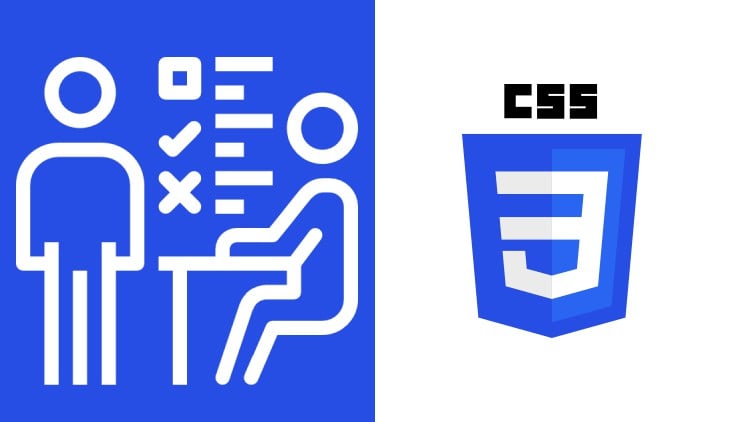
CSS Interview Questions and Answers Preparation Practice Test | Freshers to Experienced | Detailed Explanations
👥 1,591 students
Add-On Information:
Note➛ Make sure your 𝐔𝐝𝐞𝐦𝐲 cart has only this course you're going to enroll it now, Remove all other courses from the 𝐔𝐝𝐞𝐦𝐲 cart before Enrolling!
- Course Overview
- This comprehensive practice test is meticulously designed to equip individuals with the knowledge and confidence needed to excel in CSS-focused interviews.
- It offers a vast repository of over 400 questions, covering a broad spectrum of CSS topics, from fundamental concepts to advanced techniques.
- The course caters to a diverse audience, including freshers seeking to establish a strong foundation and experienced developers aiming to refine their expertise and address nuanced challenges.
- Each question is accompanied by detailed explanations, providing not just the correct answer but also the underlying rationale and best practices.
- The practice test simulates real interview scenarios, allowing candidates to gauge their understanding and identify areas requiring further attention.
- It aims to bridge the gap between theoretical knowledge and practical application, ensuring learners can articulate their CSS skills effectively in a professional setting.
- The curriculum is structured to foster a deep understanding of CSS, enabling participants to write more efficient, maintainable, and accessible stylesheets.
- By engaging with a wide array of question types, learners will develop problem-solving skills crucial for tackling complex styling requirements.
- The course content is continuously updated to reflect current industry trends and the evolving landscape of CSS technologies.
- It serves as an invaluable resource for self-assessment and targeted preparation for job interviews in front-end development and web design roles.
- The emphasis on detailed explanations ensures that learners grasp the ‘why’ behind CSS properties and their behaviors, not just the ‘what’.
- This practice test is more than just a question bank; it’s a structured learning pathway designed for mastery.
- Requirements / Prerequisites
- A foundational understanding of HTML structure and semantics is essential, as CSS is inherently linked to HTML elements.
- Basic familiarity with web browsers and developer tools is recommended for practical application and debugging.
- While not strictly mandatory, prior experience with basic CSS syntax and common properties will enhance the learning experience.
- An eagerness to learn and a commitment to practicing CSS concepts are key drivers for success in this course.
- Access to a computer or device with internet connectivity is required to access the practice test materials.
- No prior formal interview experience is necessary; the course is designed to build that confidence from the ground up.
- Skills Covered / Tools Used
- CSS Selectors: Mastery of various selector types, including element, class, ID, attribute, pseudo-classes, and pseudo-elements.
- CSS Box Model: Deep understanding of content, padding, border, and margin, including their interactions and implications.
- Layout Techniques: Proficiency in Flexbox and CSS Grid for creating responsive and complex layouts.
- Styling Properties: Comprehensive knowledge of properties related to typography, colors, backgrounds, borders, and text effects.
- Responsive Design: Application of media queries and fluid layouts for creating websites that adapt to different screen sizes.
- Units and Values: Understanding of absolute and relative units (px, em, rem, %, vw, vh) and their appropriate usage.
- Specificity and Cascade: In-depth knowledge of how CSS rules are applied and how specificity dictates precedence.
- Visual Formatting Model: Understanding of display properties (block, inline, inline-block, none) and their impact on element rendering.
- Transitions and Animations: Familiarity with CSS transitions and keyframe animations for dynamic user interfaces.
- Advanced CSS: Exposure to concepts like CSS variables (custom properties), calc(), and preprocessors (though the focus is on core CSS).
- Browser Compatibility and Debugging: Strategies for ensuring cross-browser consistency and using developer tools effectively.
- Accessibility in CSS: Understanding of how to write CSS that supports web accessibility standards.
- Performance Optimization: Awareness of techniques to write efficient and performant CSS.
- Conceptual Understanding: Ability to explain CSS concepts clearly and concisely.
- Problem-Solving: Application of CSS knowledge to solve real-world styling challenges presented in interview questions.
- Tools: Primarily relies on the learner’s understanding of CSS itself, with implicit use of web browsers and their developer consoles for verification.
- Benefits / Outcomes
- Enhanced Interview Readiness: Significantly boosts confidence and preparedness for CSS-specific interview questions.
- Improved Conceptual Clarity: Deepens understanding of fundamental and advanced CSS principles.
- Articulate Skills Effectively: Develops the ability to clearly explain CSS concepts and solutions during interviews.
- Identify Knowledge Gaps: Pinpoints specific areas of CSS knowledge that require further study or practice.
- Broader Topic Coverage: Ensures exposure to a wide range of CSS topics, preventing surprises in interviews.
- Practical Application: Bridges the gap between theoretical learning and practical implementation of CSS.
- Career Advancement: Increases employability for front-end developer, UI/UX designer, and related roles.
- Efficient Problem Solving: Sharpens the ability to troubleshoot and solve styling issues effectively.
- Building Robust Websites: Fosters the creation of more maintainable, scalable, and performant CSS code.
- Foundation for Advanced Topics: Provides a solid base for learning CSS frameworks and preprocessors.
- Increased Confidence: Empowers individuals to approach CSS interviews with assurance.
- Time-Efficient Preparation: Offers a structured and focused approach to interview preparation.
- PROS
- Extensive Question Coverage: Over 400 questions ensure broad exposure to potential interview topics.
- Detailed Explanations: Crucial for understanding the ‘why’ behind answers, not just memorization.
- Caters to All Levels: Suitable for both beginners and experienced professionals.
- Simulates Real Interviews: Provides valuable practice in a test-like environment.
- Reinforces Core Concepts: Helps solidify understanding of fundamental CSS principles.
- CONS
- Focus Solely on Questions: May lack practical coding exercises or project-based learning to apply knowledge in a build context.
Learning Tracks: English,Development,Web Development
Found It Free? Share It Fast!